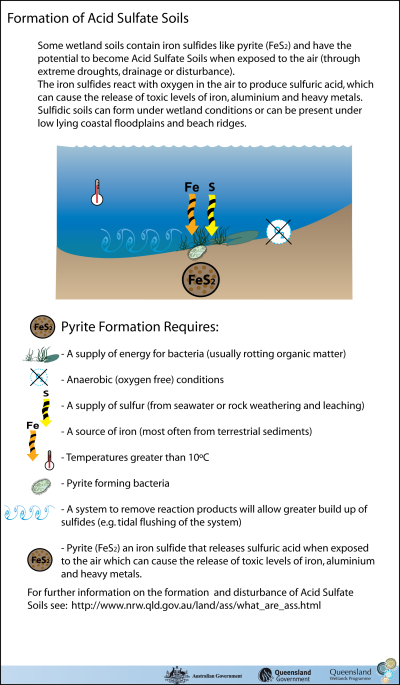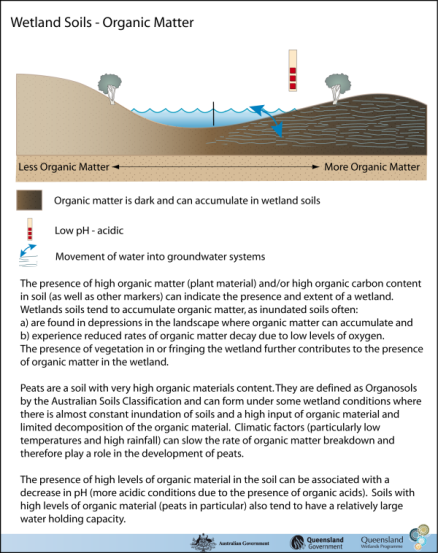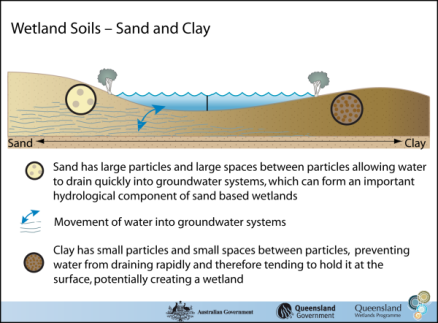|
|
Coastal and subcoastal non-floodplain wet heath swampCoastal and subcoastal non-floodplain wet heath swamp – GeomorphologyClick on elements of the model or select from the tabs below
Coastal non-floodplain heath swamp habitats occur on coastal sand plains, low parallel dune swales where there is often a peat layer. They can occur in swampy areas on sand plains, poorly drained coastal dunes and sand plains, and the low part of sandmass coastal landscapes where water collects from both overland flow and infiltration from adjoining sand dunes. These wetland habitat types can form in relation to coffee rock in the dune systems, hard pan, and/or a water table/groundwater discharge system. This wetland habitat type can be found in narrow valleys, where there is constant groundwater seepage from hills and a low enough gradient for organic matter to accumulate. This usually occurs in the upper catchment where water flow is not fast or strong enough to flush organic matter from the soil. Wet heath, in general, are non-floodplain systems, though there are some exceptions. SoilIn Wet Tropics, wet heath form on sand plains and dune swales (not alluvial areas) in locations that are commonly wet, and tend to be associated with an accumulation of in-situ organic matter. The permanently wet ones (Wet Tropics) have peat right down to rock. The majority of the others are seasonally dryer with a well-developed organic surface layer on mineral soils (still vulnerable to drying out and burning). Heath soils are typically very low in nutrients and can often be found associated with an organic matter topping (humic 0 horizon) coffee rock in the dune systems, hard pan and groundwater discharge system. Organic matter content in these wetland habitats is usually quite high and can move through the soil profile, as can ash, and there can be instances where salt moves through the soil profile also. The soils of wet heath habitats are characterised by low fertility—dune systems, sandstones, granites. There is a fine line between wet heath and dry heath. The presence of an algal film, mineral soils and an organic matter topping tend to be more commonly associated with wet heath.
Last updated: 22 March 2013 This page should be cited as: Department of Environment, Science and Innovation, Queensland (2013) Coastal and subcoastal non-floodplain wet heath swamp – Geomorphology, WetlandInfo website, accessed 8 May 2025. Available at: https://wetlandinfo.des.qld.gov.au/wetlands/ecology/aquatic-ecosystems-natural/palustrine/non-floodplain-heath/geomorphology.html |

 — Department of the Environment, Tourism, Science and Innovation
— Department of the Environment, Tourism, Science and Innovation






